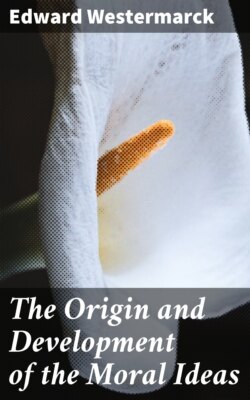Читать книгу The Origin and Development of the Moral Ideas - Edward Westermarck - Страница 24
THE KILLING OF PARENTS, SICK PERSONS, CHILDREN—FETICIDE
ОглавлениеParricide the most aggravated form of murder, pp. 383–386.—The custom of abandoning or killing parents who are worn out with age or disease, p. 386 sq.—Its causes, pp. 387–390.—The custom of abandoning or killing persons suffering from some illness, p. 391 sq.—Its causes, p. 392 sq.—The father’s power of life and death over his children, p. 393 sq.—Infanticide among many savage races permitted or even enjoined by custom, pp. 394–398.—The causes of infanticide, and how it has grown into a regular custom, pp. 398–402.—Among many savages infanticide said to be unheard of or almost so, p. 402 sq.—The custom of infanticide not a survival of earliest savagery, but seems to have grown up under specific conditions in later stages of development, p. 403.—Savages who disapprove of infanticide, p. 403 sq.—The custom of infanticide in most cases requires that the child should be killed immediately or soon after its birth, p. 404 sq.—Infanticide among semi-civilised or civilised races, pp. 405–411.—The practice of exposing new-born infants vehemently denounced by the early Fathers of the Church, p. 411.—Christian horror of infanticide, p. 411 sq.—The punishment of infanticide in Christian countries, p. 412 sq.—Feticide among savages, p. 413 sq.—Among more civilised nations, p. 414 sq.—According to Christian views, a form of murder, p. 415 sq.—Distinctions between an embryo informatus and an embryo formatus, p. 416 sq.—Modern legislation and opinion concerning feticide, p. 417.
